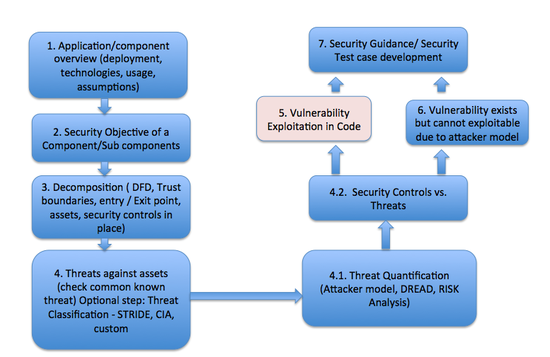Difference between revisions of "Security/Threat Analysis"
< Security
(→Threat Analysis Steps) |
(→An Example Using the Process) |
||
| Line 7: | Line 7: | ||
</gallery> | </gallery> | ||
| − | ===== | + | ===== Threat Modelling Process for OpenStack Projects ===== |
Threat Analysis Example | Threat Analysis Example | ||
[[File:Threat analysis Example.pdf|thumbnail|Threat Analysis Example]] | [[File:Threat analysis Example.pdf|thumbnail|Threat Analysis Example]] | ||
Revision as of 12:28, 24 February 2014
Contents
OpenStack Threat Anlaysis
This proposal is to start a threat analysis evaluation of the OpenStack system components. A threat analysis takes a comprehensive look at the system at hand – components, protocols and code - against the existence and capability of an adversary looking for known vulnerabilities. When a threat is identified, it is tallied and reported to the development team. In some cases, the threat analysis team may also include a suggestion to fix the vulnerabilities and related threat.
Threat Analysis Steps
Threat Modelling Process for OpenStack Projects
Threat Analysis Example File:Threat analysis Example.pdf
Existing Literature on Threat Analysis
Process
- https://www.owasp.org/index.php/Threat_Risk_Modeling
- Michael Howard, David LeBlanc, Writing Secure Code, Second Edition, Microsoft Press
- Ross Anderson, Security Engineering, Chapter 11 http://www.cl.cam.ac.uk/~rja14/book.html
- The Notorious Nine, Cloud Security Alliance The_Notorious_Nine_Cloud_Computing_Top_Threats_in_2013.pdf
Identity and Access Management System Analysis
- Identity Management Protection Profile, http://www.commoncriteriaportal.org/files/ppfiles/pp0024b.pdf
OpenStack Security Analysis
- Keystone GAP and Threat Identification for Folsom Release (Quick Study)

